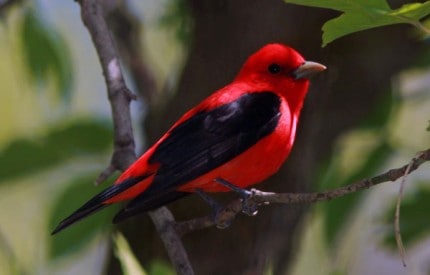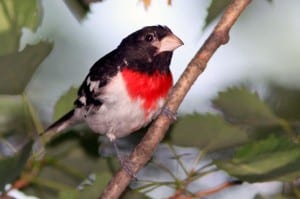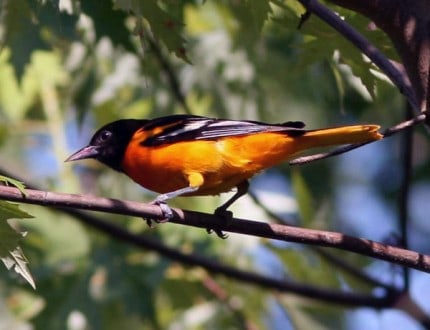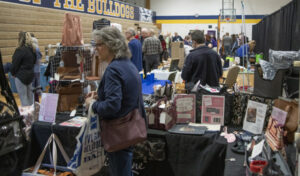
(Chelsea Update would like to thank Tom Hodgson and the Waterloo Natural History Association for the information and photos in this column.)
Although few birds can match the rainbow colors of the tropical warblers that are still migrating through our area, there are three local nesters that sport some pretty impressive pigments.
Perhaps the most brilliantly colored of them all is the scarlet tanager. The male is a gorgeous scarlet red with black wings and tail. The flaming red is replaced by a pale greenish yellow on the females. Tanagers are just arriving in our area after leaving South America and flying across the Gulf of Mexico to reach the continental U.S. They prefer to nest in deciduous woods, especially those dominated by oaks.

As brilliantly colored as they are, they are often difficult to spot as they spend much time in the tree canopy. But during periods of cold, rainy weather like we have been having, they can often be spotted at eye level while feeding closer to the ground.
The male sings his song, which sounds like a rapid, screechy robin, with great frequency early in the nesting season. The male’s call note has been described by some as sounding like “hick-burp.” Click here to see and hear the male tanager as he gives both his song and call note.
When they first arrive in Michigan they can sometimes be attracted to backyards by putting out fresh cut orange halves. If you don’t see them in your neighborhood, they can usually be heard and seen around the Discovery Center in the Waterloo Recreation Area.
The Baltimore oriole is also just arriving from its wintering grounds in South and Central America. The male is a striking orange and black. This bird will nest in more urban environments if large trees are present.
The female builds a tightly woven pouch-nest on the end of a tree branch usually some distance above the ground. Both the male and female can be attracted to backyard feeding areas by putting out fresh cut oranges, oriole feeders, or grape jelly. Oriole feeders are available from most stores that sell bird feeding supplies.
Providing nesting material can also increase the chance of your yard being chosen by the orioles. Cut yarn of any color into foot long sections and tie them in bundles to the lower branches of a backyard tree. The female will soon spot them and accept them as nesting material. The male will perch high above her and sing a song of encouragement as she retrieves the yarn.
The male Baltimore oriole has a rather halting but melodious song and many loud chattering call notes. To hear them, click here.
The third recent arrival is the rose-breasted grosbeak, a member of the finch family along with its colorful cousin the northern cardinal. Grosbeaks will be attracted to backyard bird feeders especially if they are serving sunflower seeds. The male has a black back, and a white breast that is adorned with a heart-shaped rose-red patch just below the throat.
The call of a rose-breasted grosbeak sounds like a rapid, whistley robin. To see and hear its song, click here.
Happy birdwatching.












What a treat! Beautiful photographs, and the links to the videos with sound were wonderful! Thank you, Tom
I really liked the links to the videos and sound also. I couldn’t get the Oriole one to work though. Appreciate the article.